BOS Suspension wird den Jüngeren unter Euch vor allem aus der Zusammenarbeit mit YT industries bekannt sein. Eine Zeit lang kamen die Topmodelle immer mit BOS Federelementen. Nun war es aber einige Zeit ruhig geworden um die Franzosen aus Toulouse, zumindest was den Mountainbike-Bereich angeht, schließlich bauen sie auch Rallye und Motocross Fahrwerke. Seit ein paar Wochen gibt es aber im Bereich Mountainbiken etwas Neues zu vermelden: Der lang ersehnte Nachfolger der Deville Enduro Gabel ist da.
BOS Suspension will be known to the younger ones especially from the collaboration with YT industries. For a while, the top models always came with BOS suspension elements. It was a bit quiet for a while around the Frenchmen from Toulouse, but since a few weeks there is something new to report about mountain biking: the Deville enduro fork follower is on the market.
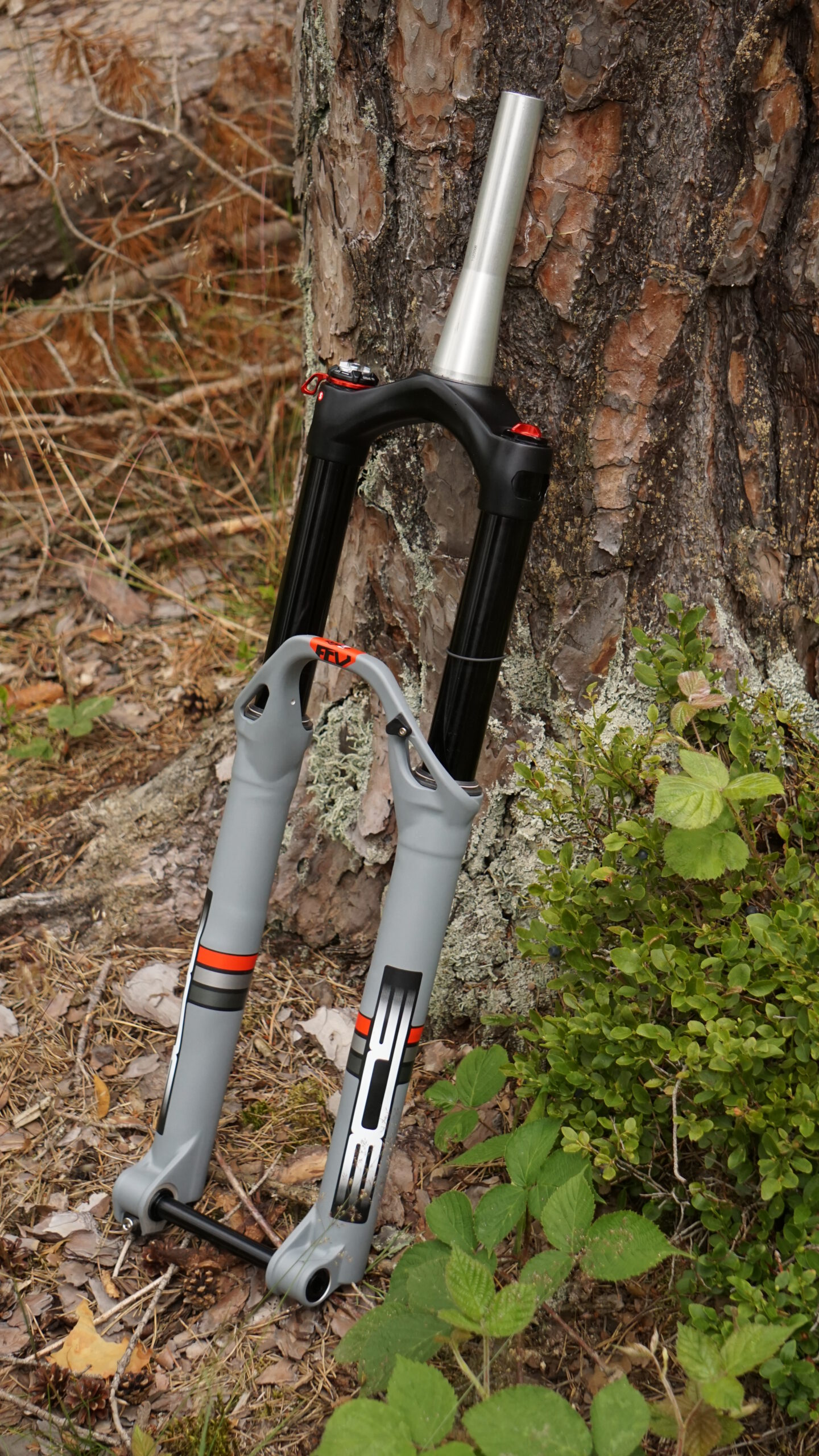
Die BOS Deville II 35 FCV ist neu auf dem Markt und wir durften sie vier Wochen lang testen.
Die Älteren unter uns kennen BOS aber noch aus einem anderen Grund. Entstanden ist die Firma des Gründers Olivier Bossard aus einem legendären Downhill-Rennteam, das die Anfangsjahre in den 90ern mit großen Erfolgen geprägt hat. Bei SUNN waren Olivier Bossard und Nicolas Vouilloz im Rennsport aktiv und daraus sollte sich 1999 BOS Suspension gründen, die rennfertige Dämpfer und Gabeln für den Downhill Sport entwickelten. Zusammen mit der Mountainbikeschmiede V Process von Nicolas Vouilloz entstand ein weiteres unschlagbares Team, das von 1999 bis 2003 ingesamt 5 DH-Weltmeistertitel holte! Legendär!
Das erste Mal, dass mir persönlich BOS aufgefallen ist: der geniale Part von Nicolas im damaligen Bikefilm New World Disorder II. Untermalt von harten Riffs von Disturbed ballert Nicolas mit einer Leichtigkeit grobe Steinfelder in den französischen Seealpen herunter. Damals sahen wir diese Bilder ungläubig an und auch noch heute sieht das nicht nach einer alten Zeit aus. Den Film muss ich übrigens mal wieder rauskramen. Aber jetzt wieder zurück zum eigentlichen Thema des Beitrages, der neuen Enduro Gabel Deville II 35 FCV:
The older ones among us do know BOS for other reasons. The company of Olivier Bossard was created from a legendary downhill racing team that dominated the 90s. At SUNN, Olivier Bossard and Nicolas Vouilloz were active in downhill racing and after the ruin of Sunn, BOS Suspension was established in 1999. They were developing race-ready shox and forks for downhill sport and togehther with Nicolas Vouilloz´mountainbike brand V Process they were unbeatable and they won a total of 5 DH world titles from 1999 to 2003! Legendary!
The first time that I noticed BOS: the ingenious part of Nicolas in the bike film New World Disorder II. Accompanied by hard riffs from Disturbed, Nicolas flow down stone fields with ease in the French Maritime Alps, which was unbelievable at that time. Just a notice for me: have to see that movie again. But to the topic of the article, the new Enduro fork Deville II 35 FCV:
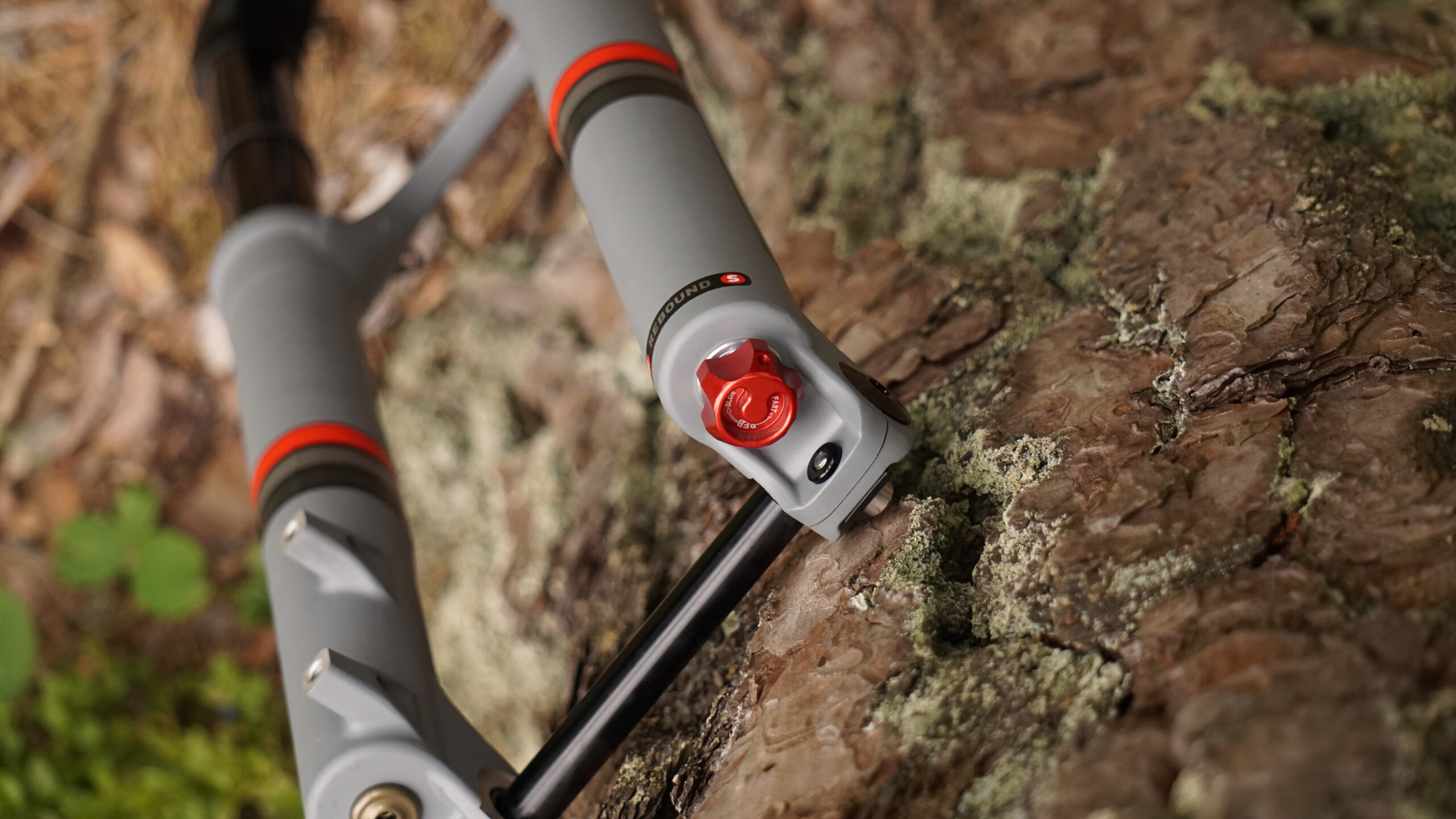
Zugstufe, High-und Lowspeed Druckstufe und eine leichte Plattform sind einstellbar.
Details:
Vollständig überarbeitete und optimierte Kartusche, bei einem geringen Gewicht (<2000 g). Dreifach einstellbar; FCV: Patentierte BOS-Technologie bei der die Druckstufendämpfung sich automatisch dem Untergrund anpasst (frequency control valve). Achsen in 15mm oder 20mm erhältich (Boost), High-und Lowspeed Druckstufe einstellbar, Zugstufe, Lockout, Radgröße: 27,5 und 29 ’’ Federweg: 160 oder 170mm; Magnesium Casting, Gabelkrone: Aluminium 7050, Nachlauf: 48mm Gesamtgewicht: 2000 g;
Details:
Completely redesigned and optimized cartridge, with a low weight (2000 g). Triple adjustable; FCV: Patented BOS technology in which the pressure level damping automatically adapts to the substrate (frequency control valve). Axles in 15mm or 20mm get (boost), high and low speed compression adjustable, rebound, lockout, wheel size: 27.5 and 29” travel: 160 or 170mm; Magnesium Casting, Fork Crown: Aluminum 7050, Trailing: 48mm Total weight: 2000 g;

Gefräste Hebel und Knöpfe machen die BOS auch optisch zu einem Leckerbissen
Einstellung:
Bei BOS gibt es zu jeder Gabel eine Setup-Anleitung, mit der man sehr leicht zu einer funktionierenden Grundeinstellung kommen kann. Einfach Luftdruck nach Körpergewicht einstellen und Tabelle für die Zug-und Druckstufe wählen, entweder Race-Betrieb oder Hobby-Fahrer. Mit diesen Parametern erreicht man innerhalb von ein paar Minuten ein sehr gutes Grundsetup. Bei den Franzosen liegt dieses auch immer sehr nahe an einem idealen Setup. Sie haben die Einstellwege auch so designt, dass ein völliges Fehleinstellen ausgeschlossen ist – eine Grundfunktionalität ist somit immer gegeben. Ein Unterschied laut BOS zu Großserienherstellern: absolut race ready!
Ich habe für die erste Ausfahrt die Hobby-Tabelle eingestellt, was 14 clicks (von komplett geschlossen (Uhrzeigersinn komplett zu)) bei der Zugstufe, 11 clicks bei der High Speed Druckstufe und 10 clicks bei der Low Speed Zugstufe bedeutet. Im Laufe der ersten Ausfahrten habe ich lediglich die Zugstufe um 2 clicks auf 12 reduziert, um sie auf meine wurzeligen Hometrails anzupassen.
Im Bikeparkbetrieb bin ich dann auf 10 clicks Zugstufe und 7 clicks bei der High Speed Druckstufe gegangen. Dadurch war die Gabel agiler.
At BOS there is a set-up guide for each fork, with which it is very easy to get a functioning basic setting. Simply adjust the air pressure according to body weight and select the table for the rebound and compression level, either race operation or hobby rider. With these parameters you can achieve a very good basic setup within a few minutes. At BOS, this is always very close to an ideal setup, because they have designed the adjustment paths so that a complete incorrect adjustment is impossible – a basic functionality is therefore always given. A difference according to BOS to large series manufacturers: absolutely race ready!
I set the hobby table for the first exit, which means 14 clicks (from completely closed (clockwise completely closed) for the rebound, 11 clicks for the high speed and 10 clicks for the low speed compression. In the course of the first exits, I only reduced the rebound by 2 clicks to 12 in order to adapt it to my rooted home trails.
For my bikepark rides I reduced again the rebound by 2 clicks (10) and the low speed compression to by 4 clicks to 7. The fork was more active then.
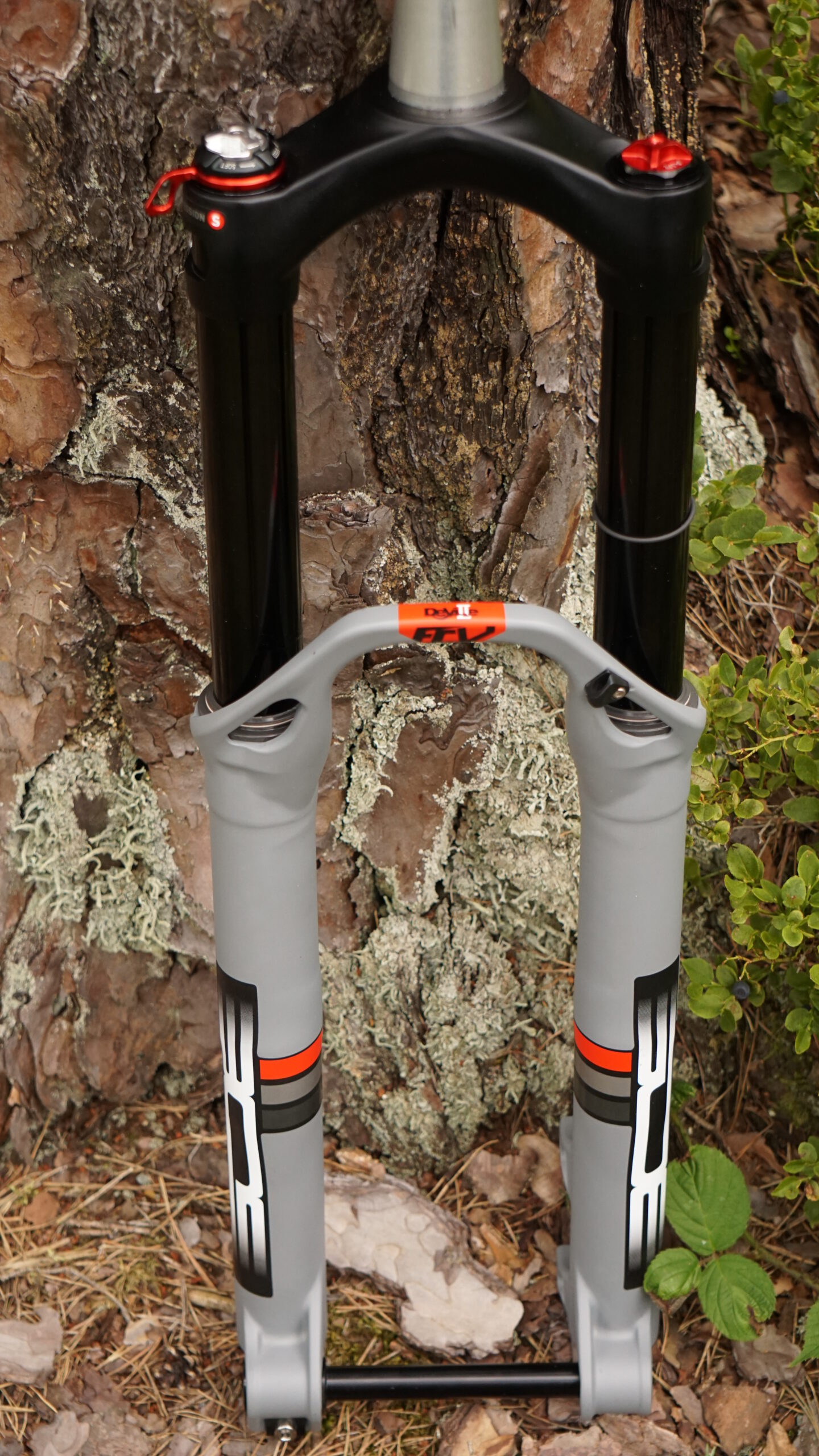
35er Standrohre, geringes Gewicht und hohe Steifigkeit zeichnen die Deville 2 aus.
Auf dem Trail:
Wer schon mal einer BOS Gabel beim Arbeiten zugehört hat, der ist auch bei der Neuen nicht verwundert, für alle anderen stellt das Szenario wohl erstmal eine etwas seltsame Situation dar. Laut schmatzend saugt die Deville II alles auf, was in den Weg kommt. Etwa so, wie das Krümelmonster, wenn es sich noch einen Keks in den Schlund wirft. Ich liebe dieses Geräusch schon jetzt. Bald fällt einem dann auf, dass die Gabel alles dermaßen wegbügelt, wie ich es noch von keiner anderen Gabel gesehen habe. Das liegt meiner Meinung nach, vor allem am FCV System (frequency control valve), das in etwa so arbeitet, wie das Brain System von Spezialized. Dabei erkennt die Gabel rein hydraulisch woher die Kraft auf die Gabel gerade einwirkt: Ist es der Fahrer, der gerade im Wiegetritt pedaliert, oder eine Wurzel, die weggefedert werden muss. Je nachdem bleibt dann die Dämpfung relativ geschlossen und die Gabel ruhig, oder sie öffnet sich und die Gabel arbeitet und schluckt das Hindernis weg. Das System ist laut BOS aus dem Rallye-Sport adaptiert und funktioniert auch beim Biken grandios.
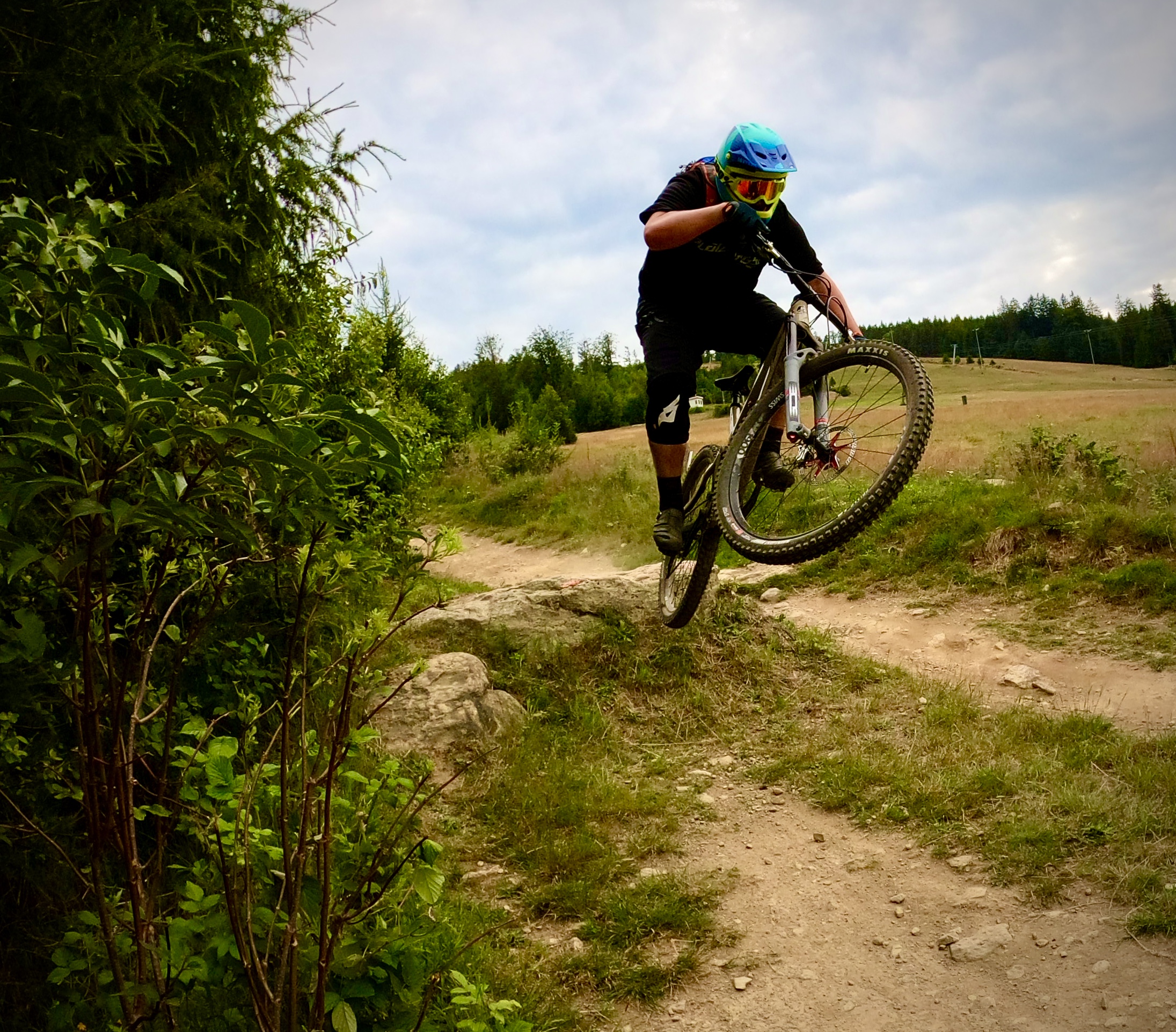
Auch im Bikepark macht die 35 eine super Figur
Anyone who has ever heard a BOS fork at work is not surprised at the new one, for everyone else the scenario is probably a bit strange. The Deville II is loudly smacking everything that gets in the way, like the Cookie Monster when it throws a cookie into its throat. Definitely sounds great to me. That is probably the first thing you notice on the first ride with the 35. But quickly after that you will recocgnize, that the 35 is absorbing everything out of it´s way and what It havent´t seen in that way, yet. In my opinion, it is mainly due to the FCV system (frequency control valve), which works approximately like the Brain System from Spezialized. The fork recognizes purely hydraulically from where the force is currently acting on the fork: Is it the driver who is pedaling while riding, or a root that has to be cushioned. Depending on the situation, the damping remains closed and the fork remains calm, or it opens and the fork works and swallows the obstacle. The system is adapted from the rally sport according to BOS and also works great in biking.
Zum Vergleich mit einer Fox 36, rein subjektiv, auf einem wurzeligen, aber nicht zu groben Hometrail:
Man fährt auf eine Wurzel zu, spürt die Erhebung, die Gabel federt vieles der Wurzel weg, aber doch nicht alles. So merkt man über was man hinweggefahren ist. Dies kann man natürlich je nach Luftdruck und Druckstufeneinstellung varrieren, aber im Großen und Ganzen bleibt dies vom Gefühl her immer ähnlich.
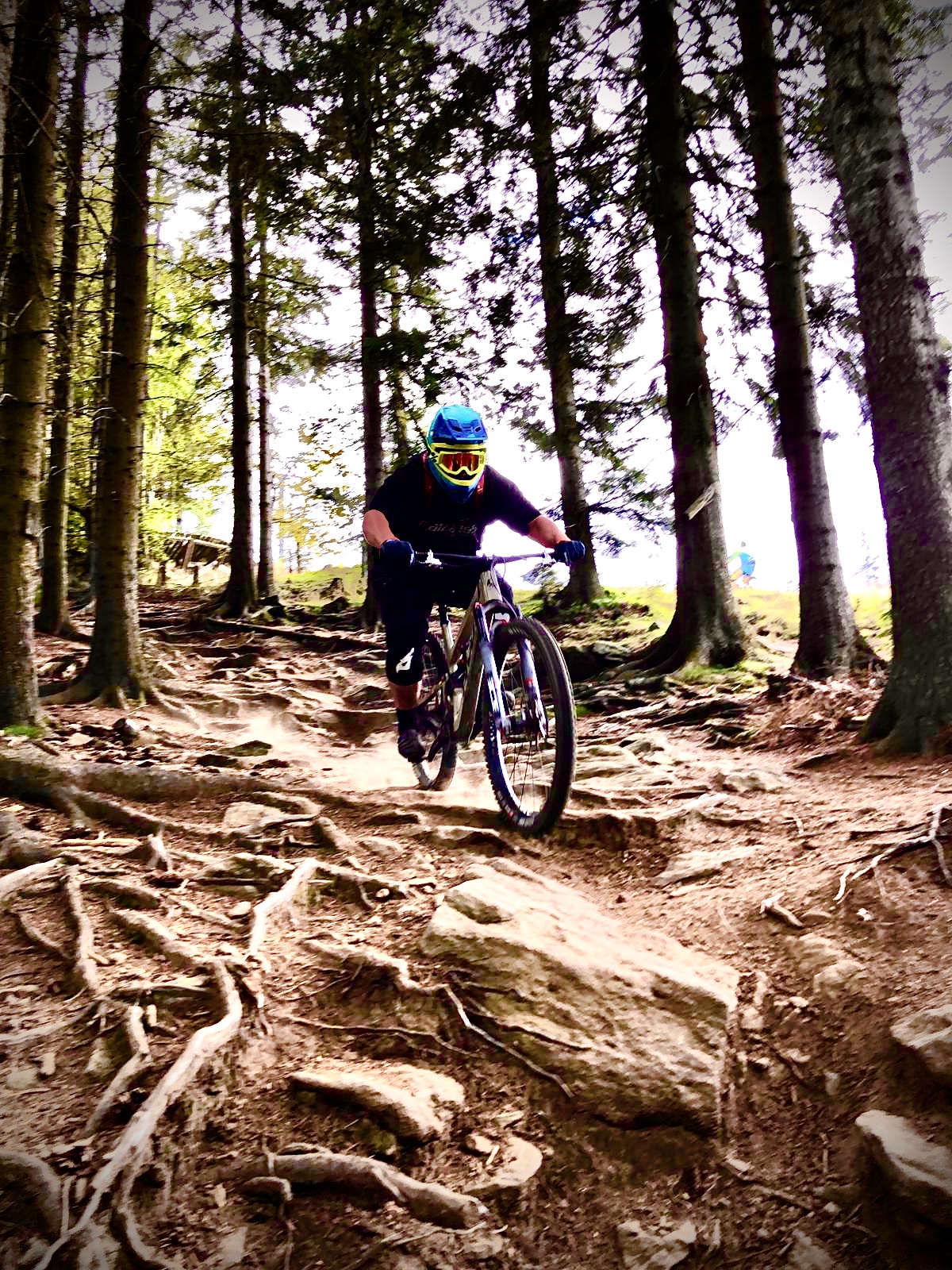
Ich kenne keine Gabel die Wurzelfelder so aufsaugt…
Gleiche Situation mit der neuen Deville II:
Man fährt auf die Wurzel zu, die Gabel schluckt blitzschnell die gesamte Wurzel und federt unglaublich schnell wieder aus. Die Wurzel wird gänzlich herausgefilert.
Ein großer Unterschied zwischen beiden Gabeln ist auch das Ausfederverhalten: Bei einer 36 hat man das Gefühl, dass nach dem Einfedern durch die Wurzel, die Gabel recht linear ausfedert, also der Reifen kurz hinter der Wurzel Kontakt zum Boden verliert. Schwierig zu beschreiben. Bei der BOS hat man das Gefühl, dass die Gabel so schnell wieder in den Ursprungszustand zurück geht, dass die Rundung der Wurzel quasi immer Kontakt zum Reifen hat. Ein richtiges Staubsaugergefühl stellt sich ein. Dadurch entsteht beim Trailfahren ein sehr großer Komfort und man hat extrem entspannte Arme, da die Schläge sehr gedämpft werden. Für ambitionierte Hobbyfahrer absolut genial, da man nicht die Oberarme eines Profis haben muss.
Auf groben und verblockten Strecken gibt sich die neue Hightech Forke auch keinerlei Blöße. Man könnte denken, dass sie durch den Komfort an Sicherheit verliert, weil sie zu tief einfedert. Davor muss man allerdings keine Angst haben. Sie bleibt hoch im Federweg stehen, lässt sich in High-und Low Speeddruckstufe auch fein abstimmen und bleibt auch bei groben Stufen unaufgeregt und stabil. Trotz der im Vergleich zu Konkurrenz schmaleren Standrohre fühlt sich die FCV super steif an und das bei unter 2000 Gramm.
For comparison with a Fox 36, purely subjective, on a rooty but not too coarse hometrail: You approach a root, feel the elevation, the fork springs away a lot from the root, but not everything. So you notice what you drove over. This can of course vary depending on the air pressure and damping setting, but on the whole it always remains the same.
Same situation with the new Deville II: You drive towards the root, the fork swallows the entire root at lightning speed and rebounds unbelievably quickly. The root is completely filtered out.
A big difference between the two forks is also the rebound behavior: With a 36 you have the feeling that after compression by the root, the fork rebounds quite linearly, i.e. the tire loses contact with the ground just behind the root. Difficult to describe. With the BOS you get the feeling that the fork returns to its original state so quickly that the curve of the root almost always has contact with the tire. A real vacuum cleaner feeling arises. This creates a very high level of comfort when trail riding and you have extremely relaxed arms because the shocks are very dampened. Absolutely awesome for ambitious hobby drivers, because you don’t have to have the arms of a professional.
The new high-tech fork does not show any bareness on rough and blocked trails. You might think that comfort loses security because it compresses too deep. You don’t have to be afraid of that. It remains high in travel and can also be fine-tuned in the high and low speed compression and remains unexcited and stable even at rough stages. Despite the narrower standpipes compared to the competition, the FCV feels super stiff and that at less than 2000 grams.
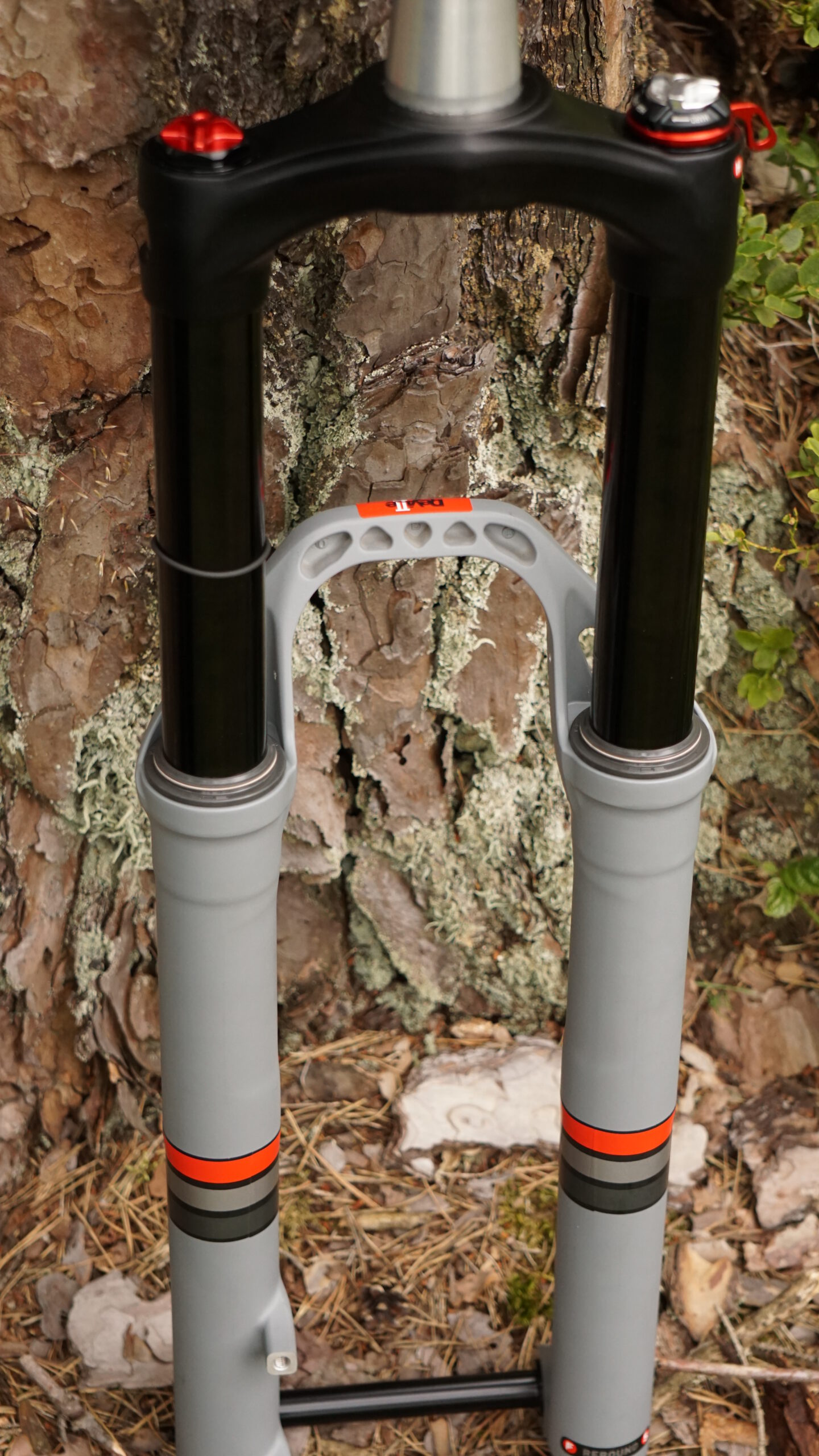
Überall Fräsungen wo kein Material sein muss – unter 2000 Gramm sind für eine 29er Trailgabel top.
Einzig für Enduro Racer könnte die Gabel befremdlich sein, weil sie wie oben beschrieben, weniger Gegenhalt bietet als zb. eine Fox 36 Factory und der Untergrund nicht so direkt am Lenker fühlbar ist. Das könnte hier und da ein paar Zehntel kosten. Allerdings ist einer der großen Vorteile die kraftsparenende Fahrweise, da die Deville wirklich wenig an den Fahrer durchlässt und man so später ermüdet. Hier kann man also die Zeit wieder rausholen. Wäre interessant, wie sich das bei einem Top-Fahrer auf die Zeiten auswirken würde.
Alles in Allem eine absolute Hightech-Gabel, die sich mit der FCV Dämpfung von der Konkurrenz abhebt. Ich gebe für die Gabel glatte 10 Punke.

Only for enduro racers could the fork be strange because, as described above, it offers less support than, for example a Fox 36 Factory and the trail surface is not felt so directly on the handlebars. That could cost a few tenths here and there. However, one of the big advantages is the energy-saving driving style, since the Deville really does not let very much through to the driver and you get tired later. So here you can get the time out. It would be interesting to see how that would affect the times of a top driver.
All in all, an absolute high-tech fork that stands out from the competition with FCV damping. 10 points for this fork!
